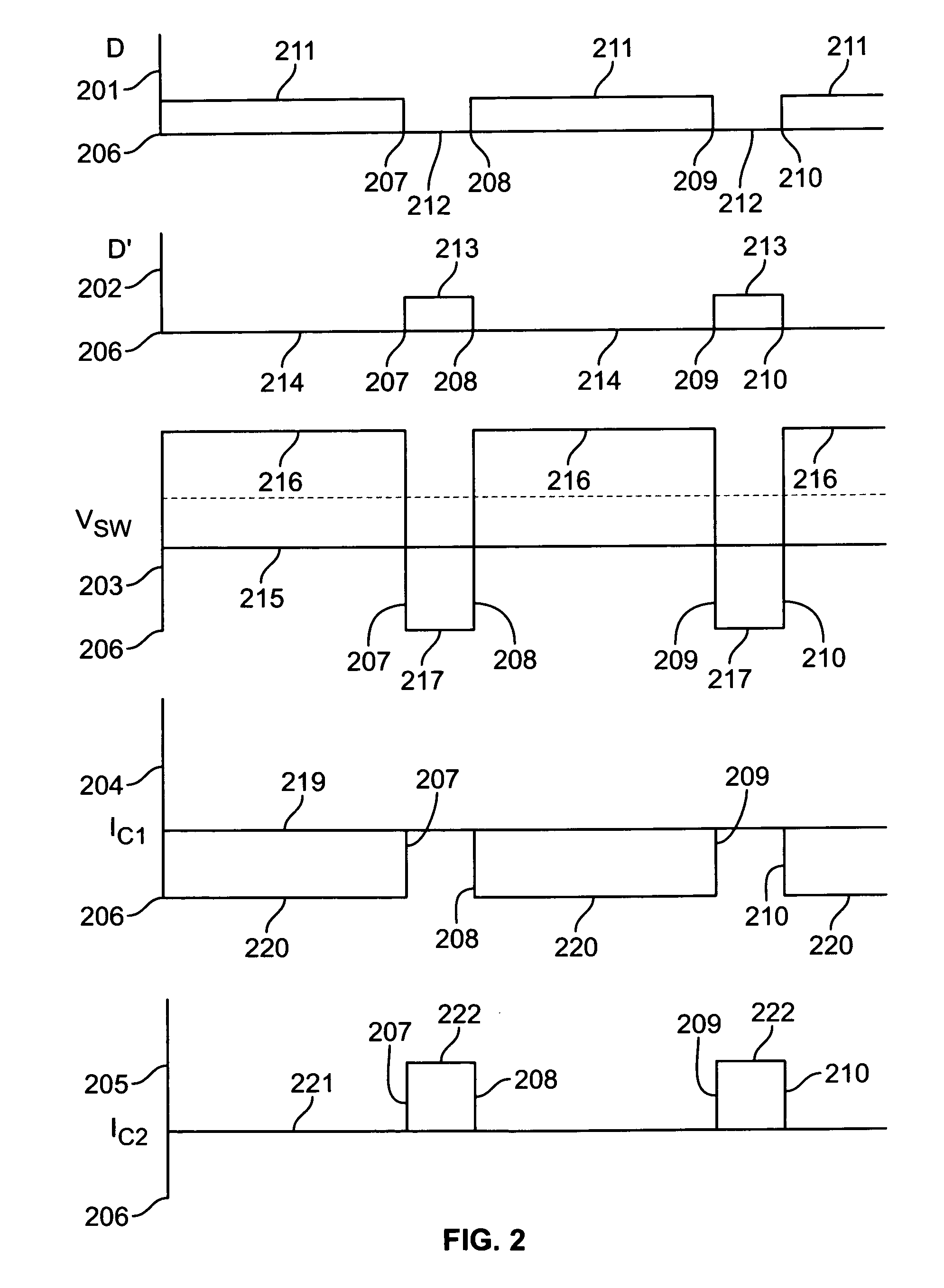Method and apparatus for power converter for class d audio power amplifiers
a power amplifier and power converter technology, applied in the direction of dc-dc conversion, dc-dc conversion, efficient power electronics conversion, etc., can solve the problems of large capacitance disproportionate to the lower power output large capacitance of 50,000 uf, and large capacitance of low power amplifiers driving low impedance loads. , to achieve the effect of minimizing the effects of off side charging and rail sag, good line regulation
- Summary
- Abstract
- Description
- Claims
- Application Information
AI Technical Summary
Benefits of technology
Problems solved by technology
Method used
Image
Examples
Embodiment Construction
[0034]A method and apparatus for power conversion in a class D amplifier is provided. The power conversion is achieved using synchronous rectifiers in a regulated half bridge power supply, taking the sum of the positive and negative rails as feedback, in order facilitate energy transfer between positive and negative output rails. This minimizes the effects of off side charging and rail sag, as well as achieving good line regulation, while allowing use of very small, low value output capacitors.
[0035]FIG. 4 is a waveform diagram illustrating an example of power supply voltage rail regulation in accordance with at least one embodiment. Waveform 401 depicts an AC waveform at the output of a transformer secondary winding, before rectification. Waveform 402 depicts a positive power supply voltage rail substantially free of ripple arising from off side charging. Waveform 403 depicts a negative power supply voltage rail substantially free of ripple arising from off side charging. As can be...
PUM
 Login to View More
Login to View More Abstract
Description
Claims
Application Information
 Login to View More
Login to View More - R&D
- Intellectual Property
- Life Sciences
- Materials
- Tech Scout
- Unparalleled Data Quality
- Higher Quality Content
- 60% Fewer Hallucinations
Browse by: Latest US Patents, China's latest patents, Technical Efficacy Thesaurus, Application Domain, Technology Topic, Popular Technical Reports.
© 2025 PatSnap. All rights reserved.Legal|Privacy policy|Modern Slavery Act Transparency Statement|Sitemap|About US| Contact US: help@patsnap.com



